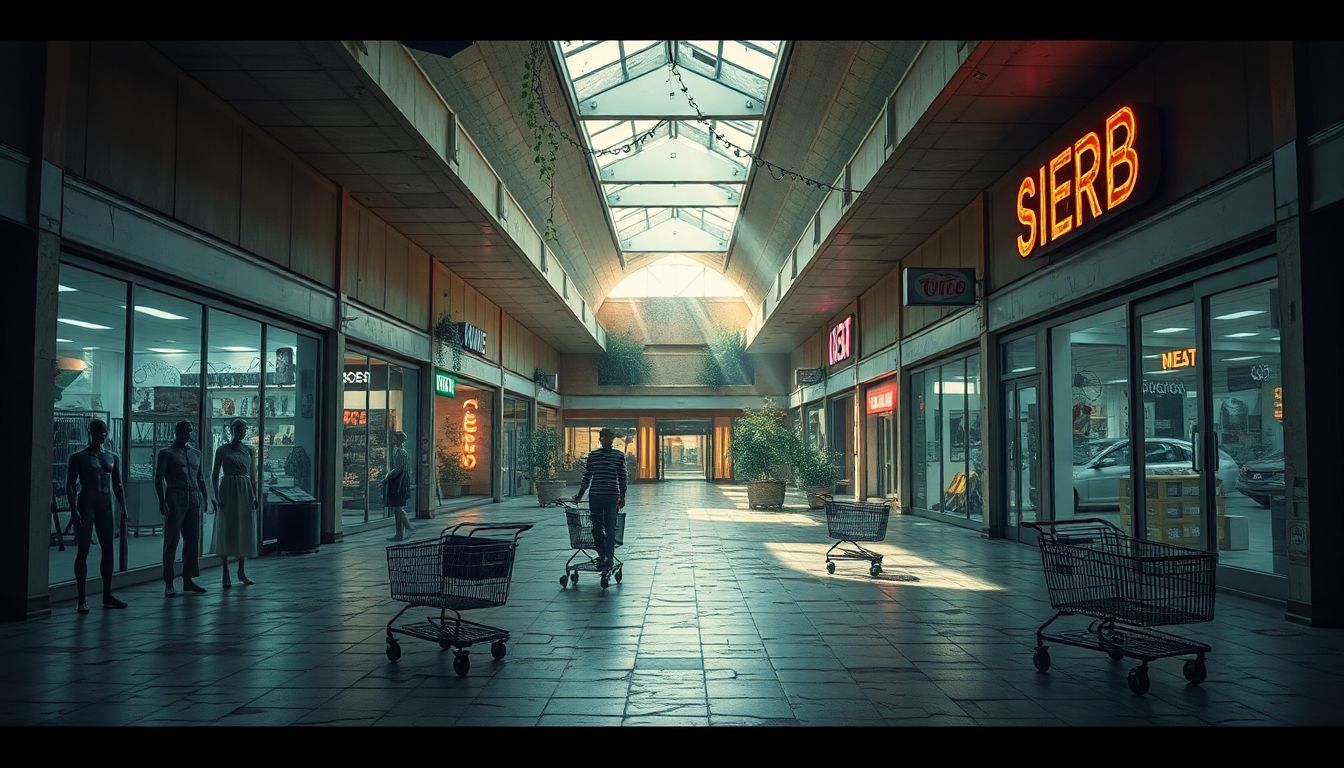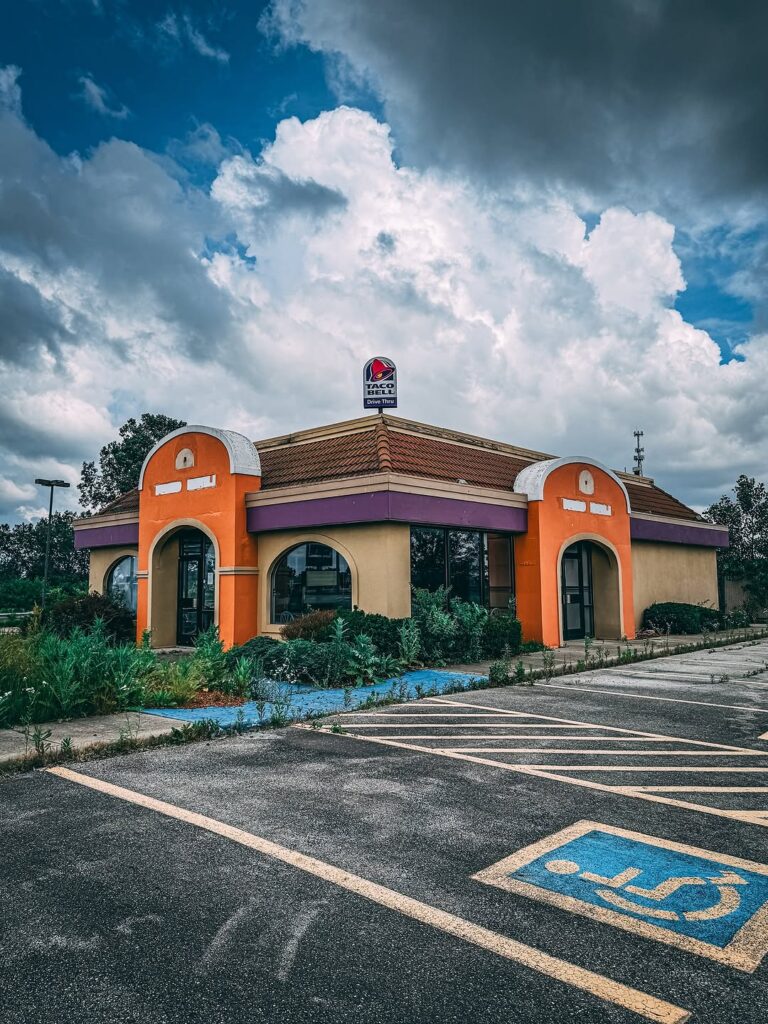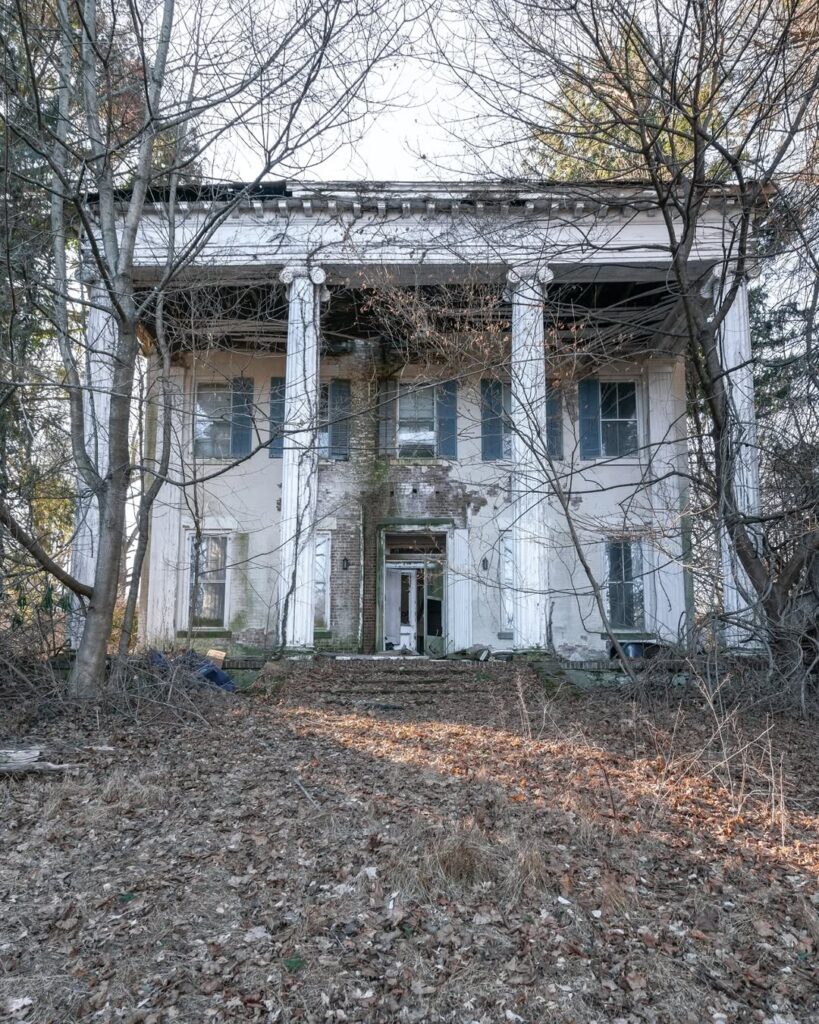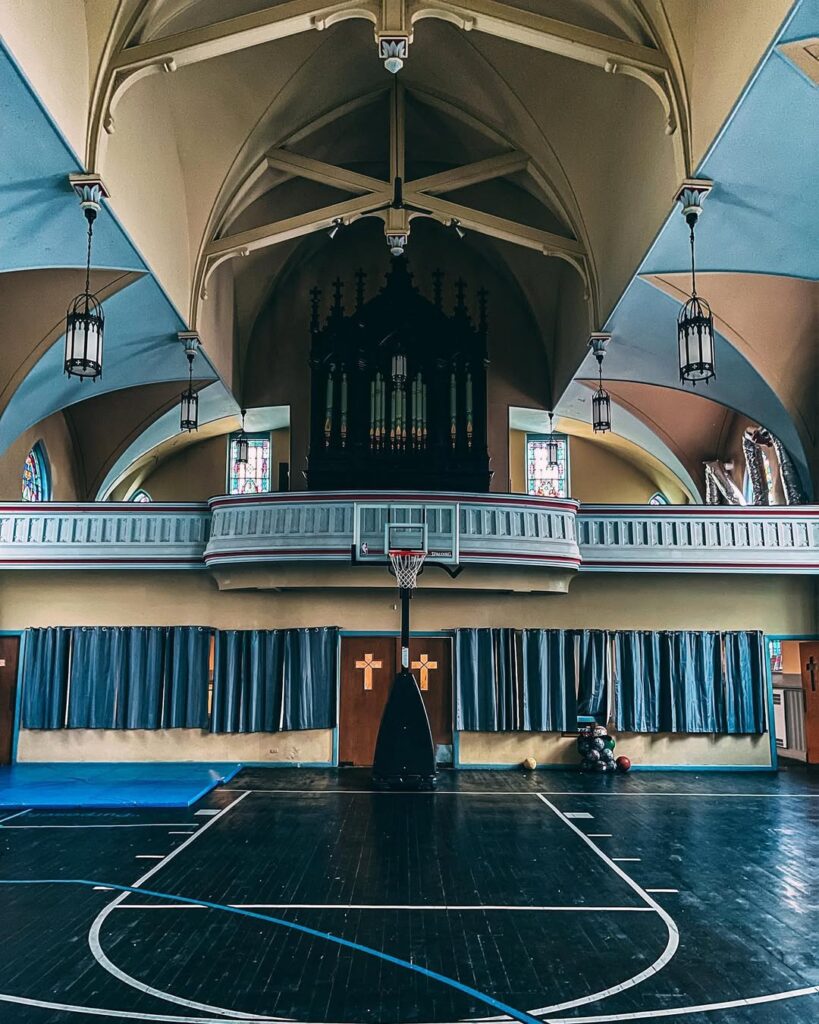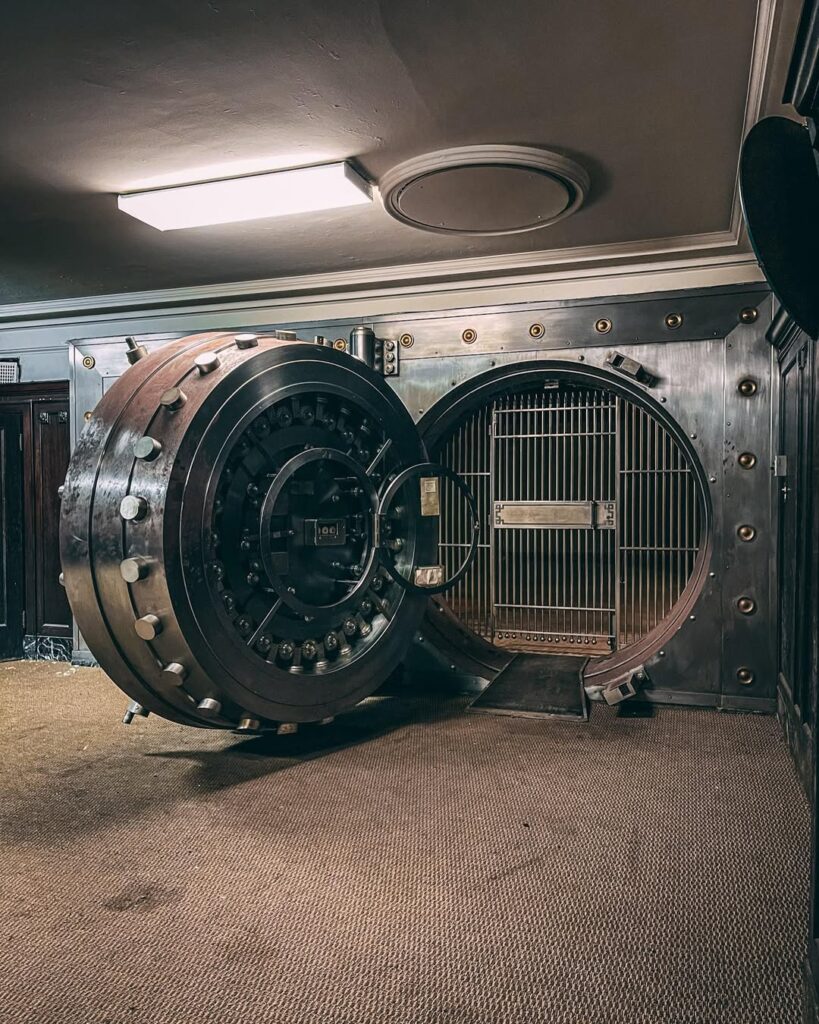The eerie silence of an abandoned shopping mall with everything left behind tells a story that resonates deeply with modern America. These vast, empty spaces that once buzzed with life now stand as monuments to changing consumer habits, economic shifts, and the unstoppable march of time. Walking through these forgotten retail spaces feels like stepping into a time capsule, where mannequins still pose in darkened storefronts and food court chairs remain neatly arranged around tables that will never again host family meals.
Table of Contents
ToggleThe Rise and Fall of the American Shopping Mall
The Golden Age of Retail Centers
The shopping mall phenomenon began in the 1950s and reached its peak in the 1980s and 1990s. These climate-controlled consumer paradises represented the American dream of prosperity and convenience. Families would spend entire weekends browsing stores, eating at food courts, and socializing in these indoor communities. The mall became more than just a shopping destination—it evolved into a cultural hub where teenagers hung out, seniors walked for exercise, and communities gathered.
During their heyday, shopping malls were carefully orchestrated environments designed to encourage spending and social interaction. Retail archaeology reveals that these spaces were meticulously planned, from the strategic placement of anchor stores to the deliberate routing of foot traffic through corridors lined with specialty shops. The success of these retail centers seemed guaranteed, supported by suburban expansion and a thriving middle class.
The Perfect Storm of Decline
The decline of shopping malls didn’t happen overnight. Multiple factors converged to create what retail experts now call the “retail apocalypse.” The rise of e-commerce fundamentally changed how Americans shop, offering convenience and often better prices than traditional brick-and-mortar stores. Online shopping trends accelerated during the 2008 financial crisis and reached a tipping point during the COVID-19 pandemic.
Simultaneously, changing demographics and urban planning preferences shifted consumer behavior. Younger generations preferred walkable downtown areas and outdoor shopping centers over enclosed malls. The suburban sprawl that once fed mall culture began to reverse as people moved back to city centers or chose lifestyle centers that offered dining and entertainment alongside shopping.
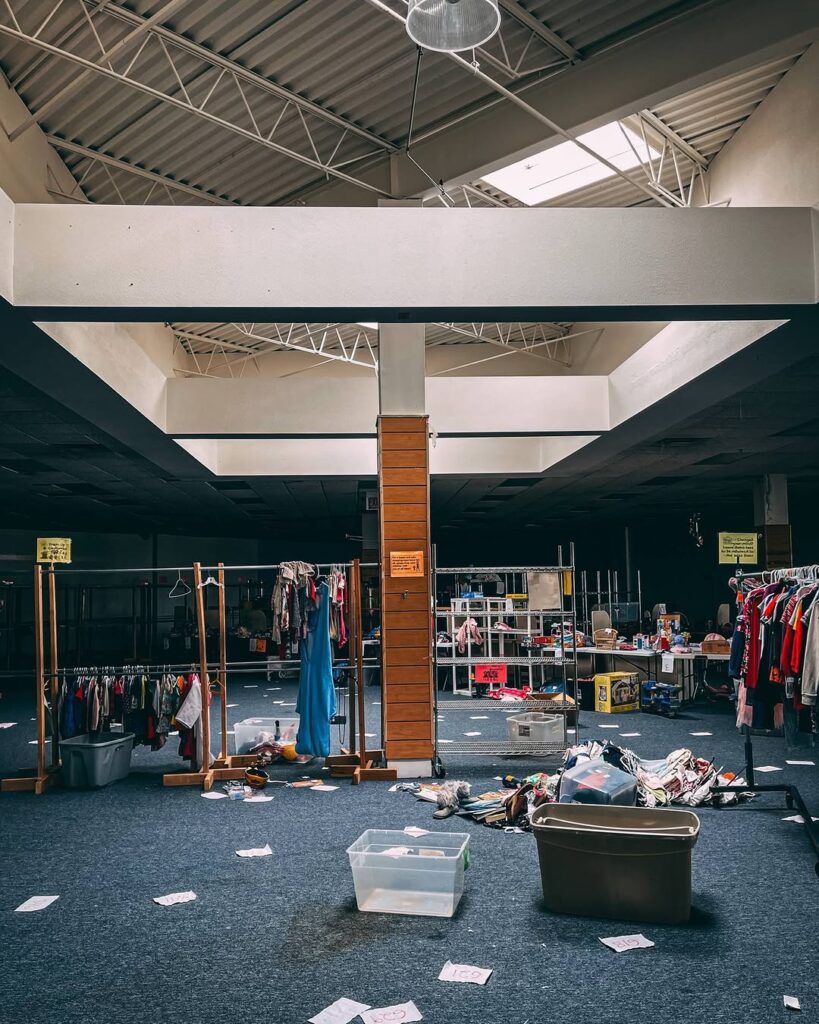
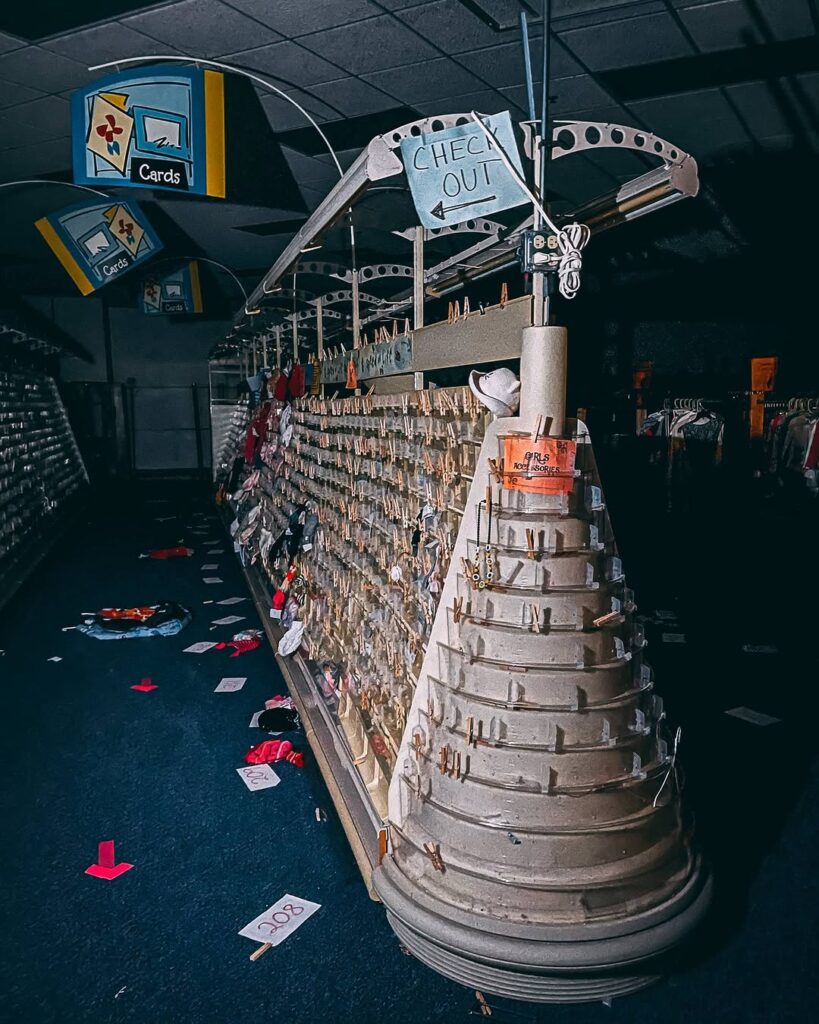
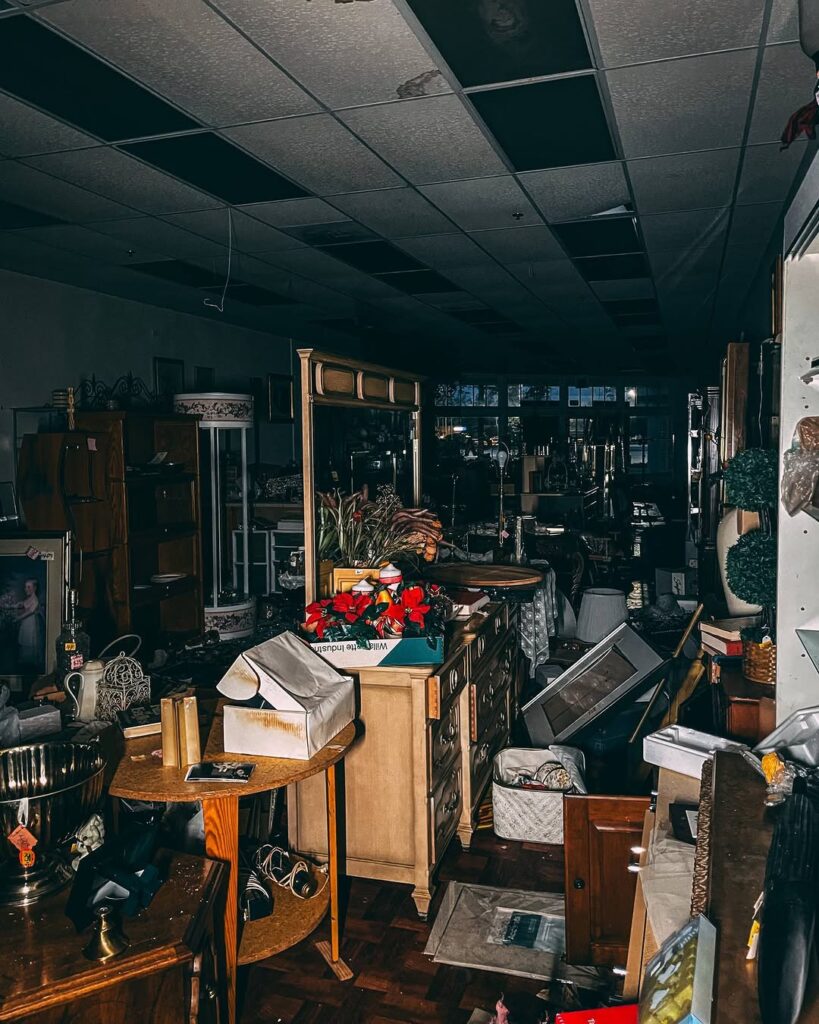

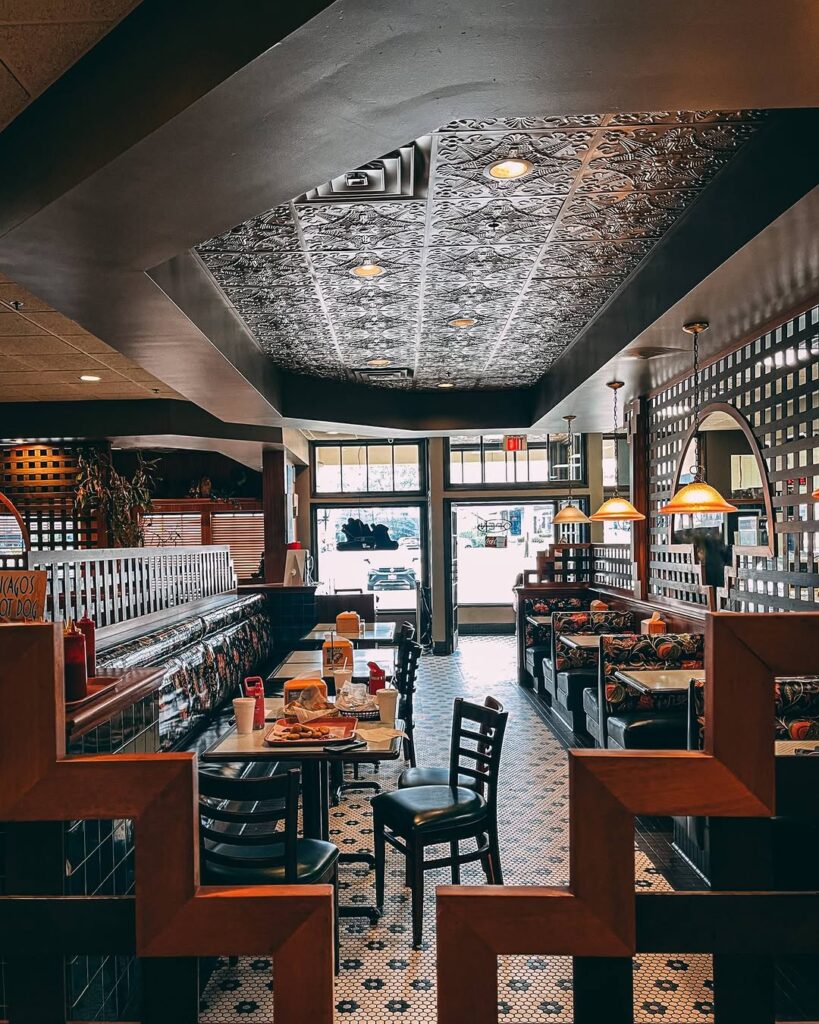
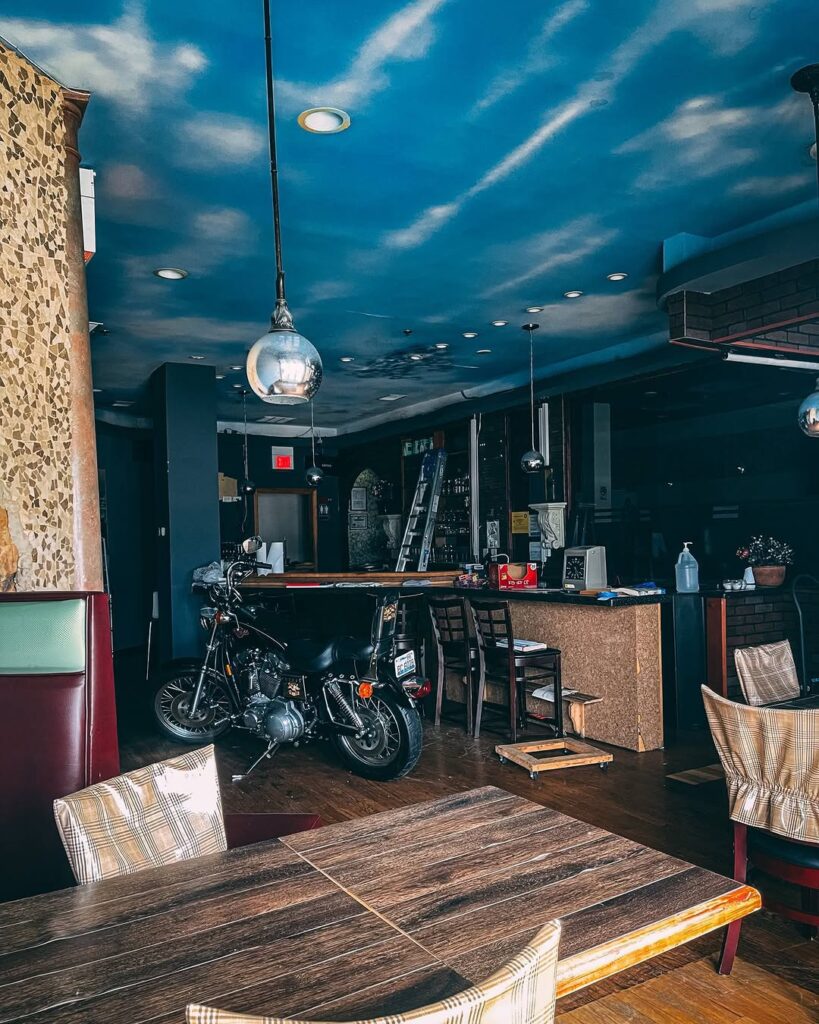
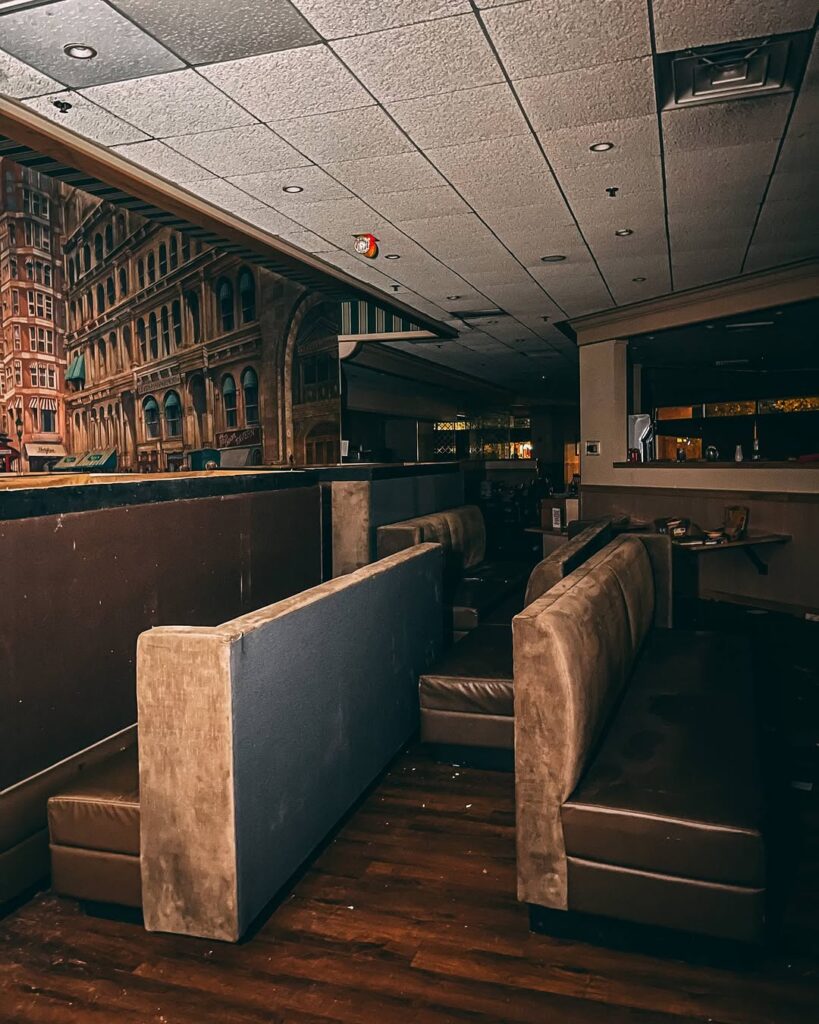



What Makes a Shopping Mall “Abandoned with Everything Left Behind”
The Anatomy of Sudden Closure
When we talk about an abandoned shopping mall with everything left behind, we’re describing a specific type of commercial closure that occurs when financial pressures force rapid abandonment. Unlike planned closures where retailers have time to liquidate inventory and remove fixtures, these sudden closures leave behind a frozen moment in retail history.
Several factors contribute to this phenomenon:
- Immediate financial collapse of the mall’s management company
- Lease disputes that force quick evacuation
- Emergency safety closures due to structural issues
- Legal complications that prevent proper closure procedures
The Time Capsule Effect
What makes these abandoned malls particularly fascinating is their preservation of everyday retail life. Urban exploration enthusiasts often discover:
- Retail fixtures still in place, including mannequins, display cases, and cash registers
- Inventory remnants scattered throughout stores
- Food court equipment abandoned mid-operation
- Seasonal decorations that mark the last holiday season the mall celebrated
- Personal belongings left behind by employees during hasty evacuations
This preservation creates an almost archaeological site where retail history is frozen in time, offering insights into consumer culture and commercial design from specific eras.
Famous Cases of Abandoned Shopping Malls
Rolling Acres Mall – Akron, Ohio
Perhaps one of the most photographed dead malls in America, Rolling Acres Mall in Akron, Ohio, became an icon of retail decay. Opened in 1975, this 1.3-million-square-foot complex thrived for decades before economic decline hit the region hard. The mall’s gradual abandonment began in the early 2000s, but what made it particularly striking was how much remained untouched.
Urban decay photography enthusiasts flocked to Rolling Acres to capture images of its deteriorating but still-recognizable retail spaces. The mall featured:
- An intact food court with tables and chairs still arranged
- Store gates pulled down but merchandise visible behind them
- A working fountain that continued to operate years after closure
- Skylights that created dramatic lighting effects in the abandoned corridors
Dixie Square Mall – Harvey, Illinois
Dixie Square Mall gained notoriety not just for its abandonment but for its role in popular culture. After closing in 1979, the mall remained largely untouched for decades, becoming a popular location for abandoned places exploration. The mall’s claim to fame came from its use in the 1980 film “The Blues Brothers,” where it served as the backdrop for a dramatic car chase scene.
What made Dixie Square remarkable was its completeness even decades after closure:
- Store signage remained intact and visible
- Interior decorations from the 1970s were preserved
- Structural elements like fountains and planters remained in place
- Retail fixtures were scattered throughout the space
Northridge Fashion Center – Milwaukee, Wisconsin
This mall’s story illustrates how quickly retail fortunes can change. Northridge Fashion Center was a thriving shopping destination until the early 2000s when a combination of economic factors and changing shopping patterns led to its decline. The mall’s abandonment was relatively sudden, leaving behind:
- Seasonal merchandise from the last holiday season
- Employee break rooms with personal items still present
- Maintenance areas with tools and equipment
- Administrative offices with paperwork and files scattered about
The Psychology and Culture of Abandoned Retail Spaces
Urban Exploration and Dark Tourism
Abandoned shopping malls have become magnets for urban explorers, photographers, and curious visitors drawn to these spaces for various reasons. The practice of urbex (urban exploration) has grown significantly, with abandoned malls serving as relatively safe entry points for newcomers to the hobby.
These spaces appeal to visitors because they offer:
- Nostalgic experiences that trigger memories of childhood mall visits
- Photographic opportunities with dramatic lighting and interesting decay patterns
- Historical insight into recent American commercial culture
- Adventure elements without the extreme dangers of other abandoned sites
The Emotional Impact of Retail Ruins
Psychologists have studied the emotional responses people have to abandoned commercial spaces. These locations often evoke:
- Melancholy for lost community gathering places
- Fascination with the temporary nature of commercial success
- Curiosity about the stories behind the abandonment
- Reflection on consumer culture and economic change
Social Media and Digital Preservation
The rise of social media has created new ways to document and share abandoned mall experiences. Platforms like Instagram, YouTube, and TikTok have popularized urban decay photography and abandoned places exploration, creating virtual communities around these forgotten spaces.
Content creators often focus on:
- Before and after comparisons showing the mall’s decline
- Exploration videos that document the current state of abandonment
- Historical research that explains the mall’s rise and fall
- Artistic photography that finds beauty in decay
The Economics Behind Mall Abandonment
Understanding Commercial Real Estate Cycles
The phenomenon of abandoned shopping malls reflects broader trends in commercial real estate. Shopping malls require significant ongoing investment to remain viable, including:
- Maintenance costs for large enclosed spaces
- Utility expenses for climate control and lighting
- Security requirements for public spaces
- Marketing investments to attract and retain tenants
When occupancy rates fall below sustainable levels, these costs become overwhelming, leading to the cycle of decline that results in abandonment.
The Anchor Store Effect
Most successful shopping malls relied on anchor stores—large department stores that drew customers and supported smaller retailers. The closure of major chains like Sears, JCPenney, and Macy’s created a domino effect:
- Foot traffic decreased significantly
- Smaller retailers struggled to maintain profitability
- Mall management faced reduced rental income
- Maintenance standards declined due to budget constraints
Adaptive Reuse and Redevelopment Challenges
While some abandoned malls find new life through adaptive reuse projects, many face significant challenges:
- Structural modifications required for new purposes
- Zoning restrictions that limit alternative uses
- Environmental remediation needs
- Financial barriers to redevelopment
What Remains: Artifacts of Consumer Culture
The Material Culture of Retail
Abandoned shopping malls with everything left behind serve as accidental museums of recent American consumer culture. These spaces preserve:
- Retail design trends from specific decades
- Product displays that show marketing strategies
- Architectural elements that reflect mall design evolution
- Technology artifacts like old cash registers and security systems
Documentation and Preservation Efforts
Some organizations and individuals work to document these spaces before they’re demolished:
- Historical societies that recognize their cultural value
- Photographers who create artistic records
- Researchers studying retail history and urban development
- Filmmakers using these locations for creative projects
The Future of Abandoned Shopping Malls
Demolition and Redevelopment
Most abandoned shopping malls eventually face demolition, making way for:
- Mixed-use developments that combine retail, residential, and office space
- Big-box retail that serves modern shopping patterns
- Distribution centers for e-commerce companies
- Public facilities like schools or community centers
Preservation and Alternative Uses
A growing number of abandoned malls find new purposes:
- Medical facilities that utilize large, climate-controlled spaces
- Educational institutions that adapt mall layouts for classrooms
- Entertainment venues that transform retail spaces into activity centers
- Religious organizations that use former anchor stores for worship spaces
Cultural Legacy and Memory
Regardless of their physical fate, abandoned shopping malls have secured their place in American cultural memory. They represent:
- Economic transitions from industrial to post-industrial society
- Social changes in how communities gather and interact
- Architectural history of late 20th-century commercial design
- Consumer culture evolution from physical to digital shopping
Exploring Abandoned Malls Safely and Legally
Legal Considerations
While the allure of abandoned shopping mall exploration is strong, visitors must understand the legal implications:
- Trespassing laws vary by jurisdiction
- Property ownership may be unclear during abandonment
- Liability issues exist for both visitors and property owners
- Local regulations may restrict access to abandoned buildings
Safety Precautions
Urban exploration of abandoned malls requires careful attention to safety:
- Structural integrity may be compromised
- Environmental hazards like asbestos or mold
- Security systems may still be active
- Emergency access can be limited in large buildings
Ethical Exploration
Responsible urbex practitioners follow ethical guidelines:
- Leave no trace principles
- Respect for property and artifacts
- Documentation without destruction
- Sharing information responsibly to prevent vandalism
Conclusion: The Lasting Impact of Abandoned Retail Spaces
The phenomenon of abandoned shopping malls with everything left behind represents more than just failed commercial ventures. These spaces serve as accidental time capsules, preserving moments in American retail history and offering insights into how quickly economic and social changes can transform entire industries.
As we move further into the digital age, these abandoned commercial spaces remind us of the physical communities that once thrived in these manufactured environments. They challenge us to consider what we’ve gained and lost in our transition from mall culture to online shopping, from physical gathering places to virtual communities.
The haunting beauty of these spaces continues to captivate visitors, photographers, and researchers who see in them not just decay, but stories of human ambition, economic change, and the eternal cycle of creation and abandonment that defines modern American capitalism. Whether they’re eventually demolished, repurposed, or left to slowly deteriorate, these abandoned shopping malls have already secured their place in our collective memory as monuments to a particular moment in American commercial and social history.
Their legacy lives on not just in the dramatic photographs and videos that document their decline, but in the conversations they inspire about community, commerce, and the spaces where we choose to gather and spend our time. In their silence, these abandoned retail spaces speak volumes about who we were, who we are, and who we might become.
![]()
Abandonedplace.com is your premier online destination for discovering and share the Top 50 abandoned places in the world. Our platform is dedicated to discovering the mystery, history and beauty of forgotten places through the Lenses of Urban Exploration

